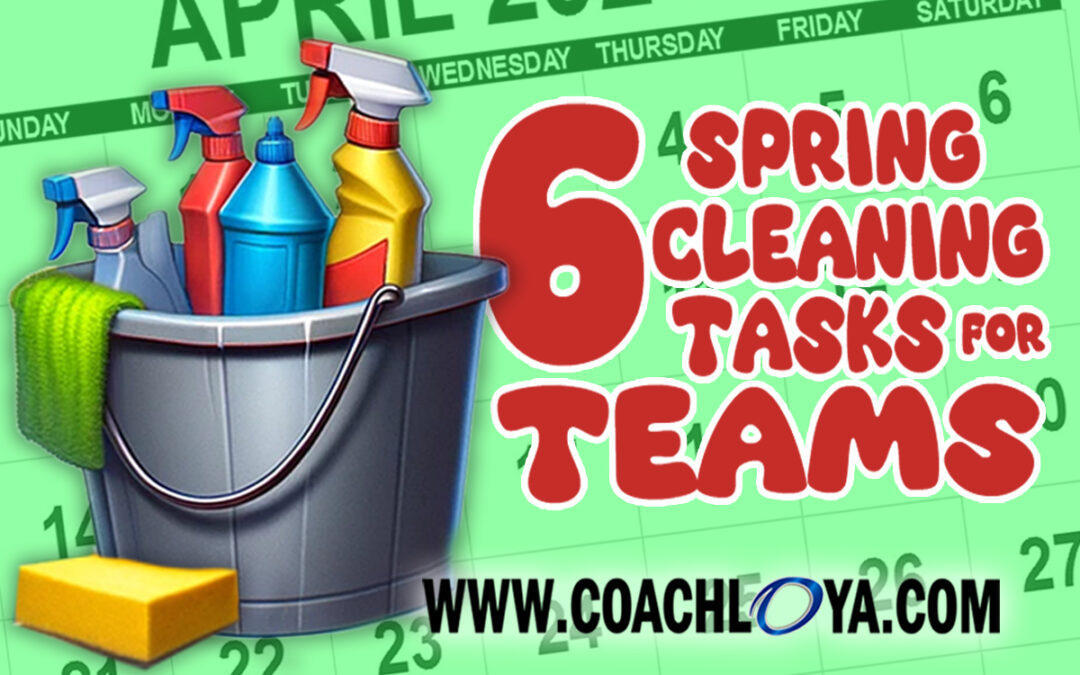Spring cleaning was an annual tradition for my grandmother. Each spring, she would roll up her sleeves, don yellow latex gloves, and embark on a thorough cleaning of her house.
For her, the endeavor involved more than just running the vacuum, mopping the floors, and wiping down the counters. It was a deep scouring of every nook and cranny in her house.
She’d clean the oven, refrigerator, window treatments, under the beds, above the cabinets, etc.
Although I loved spending time with my grandmother when I was a kid, I can’t say that helping her with spring cleaning was ever a particularly enjoyable experience. But the older I get, the more I appreciate the benefits of a thorough spring cleaning.
Here are six spring cleaning tasks that can benefit your team:
1. Dust. The tiny particles that accumulate in the corners of rooms and on the surfaces of shelves contribute not only to an untidy home but also to illnesses like asthma and indoor allergies. This is why it’s so important to get rid of cobwebs and the pesky dust bunnies behind your couch.
On teams, “dust” comes in the form of tiny tasks that you’ve been putting off. Allowing too many of these tasks to go unfinished compounds stress and leads to feeling overwhelmed. Take a metaphorical feather duster to these tasks before their accumulation becomes a threat to your psyche.
2. Scrub. Wiping down surfaces doesn’t always suffice. Some jobs require a little more elbow grease. The only way to remove tough stains and caked-on grime is to forcefully scrub.
On teams, getting caught up the daily grind can spawn bad habits. Whether it’s an unhealthy diet, insufficient sleep, or poor exercise, use this occasion to identify any lifestyle detriments that need scrubbing.
3. Polish. Doorknobs, cabinet handles, hinges, and other metal finishes need to be polished. A quick polish can restore them to their former shiny glory.
On teams, losses, disappointments, and near misses can cause you to lose your luster. Tabling your frustrations for a moment and focusing on how far you’ve come and what you have achieved is a way of polishing your attitude and restoring your sense of confidence.
4. Repair. Wear and tear takes its toll. The more things get used, the more likely they are to become loose, wobbly, or broken.
On teams, the stress of the “season” can take a toll on relationships. Estranged relationships are repaired by reconnecting. Broken ones are repaired by apologizing. Think of forgiveness as relationship superglue.
5. Replace. Unfortunately, some things cannot be repaired and need to be replaced. No amount of restitching, reupholstering, or rewiring is going to restore them.
On teams, moving on from certain teammates may be what’s best. If you’ve made a legitimate effort to try to repair the relationship and it still doesn’t work, it’s probably time to find a replacement.
6. Declutter. By overwhelming your senses with extraneous stimuli, clutter increases anxiety. Dealing with toppling piles falls under two headings: organizing and discarding. Invest in a more efficient system for storing what you need. Purge what you don’t.
On teams, clutter hampers progress. The time you invest in decluttering your desk, cleaning out an equipment closet, or purging old files will facilitate you having more time to devote to other endeavors.
The tradition of spring cleaning is often traced back to an ancient Persian purification ritual known as kane tekani, which translates to “shaking the house.” Once the house is shaken (cleaned) the new beginning can commence.
Sometimes the best way to alleviate stress, improve morale, and re-establish focus on a team is to shake the house. Sometimes the best way to be a good teammate is to take on this task.
As always…Good teammates care. Good teammates share. Good teammates listen. Go be a good teammate.





